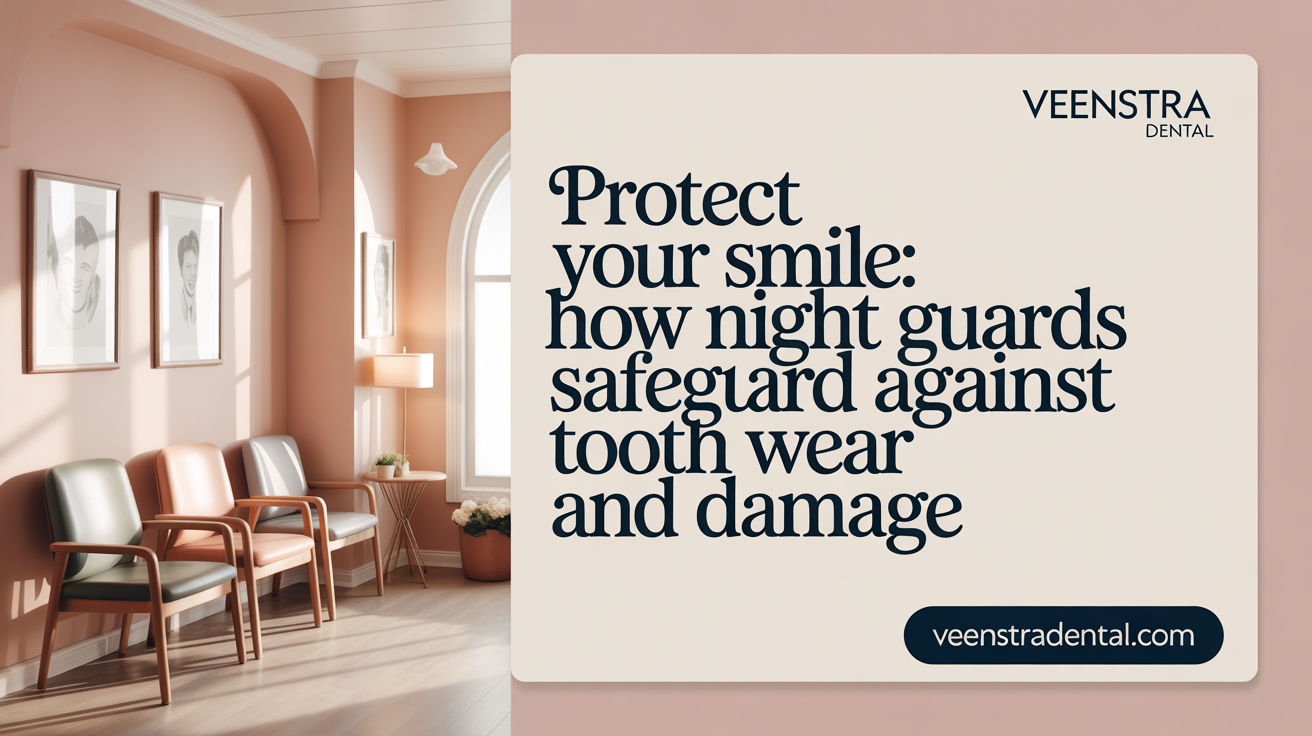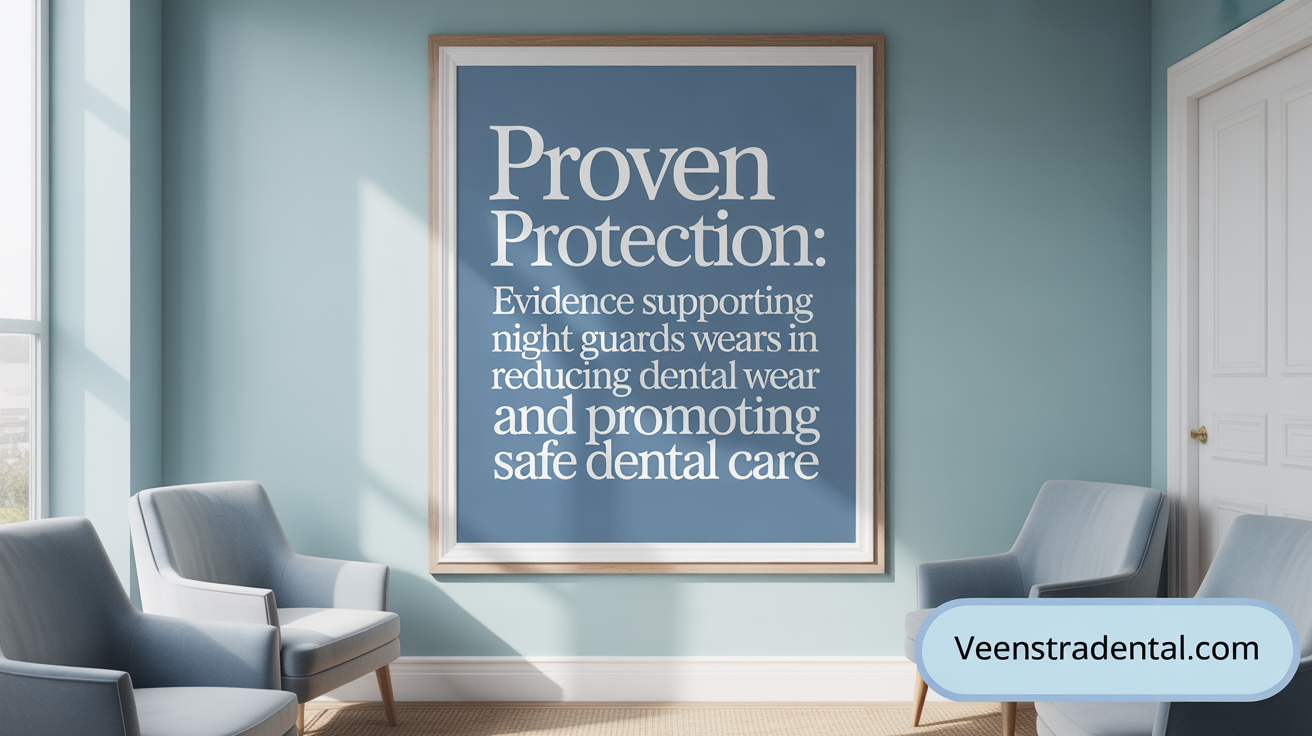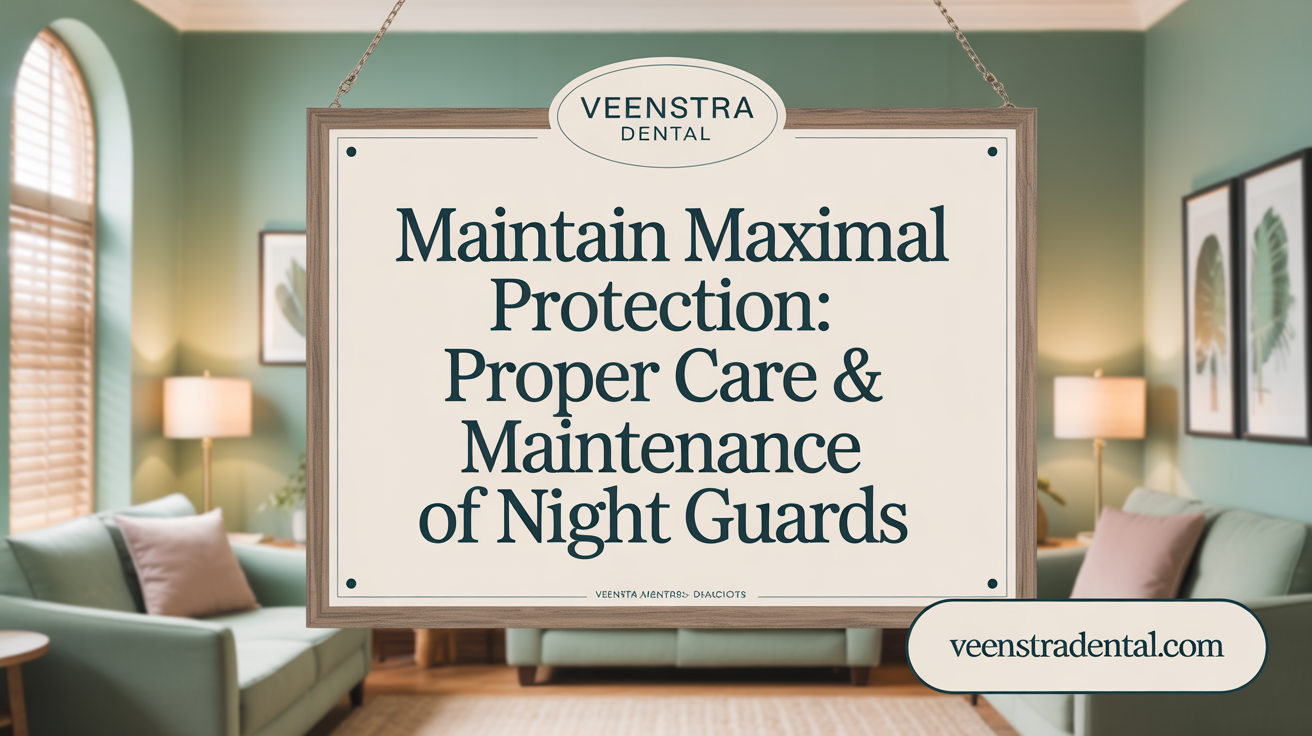Understanding Bruxism and the Protective Role of Night Guards
Bruxism, the involuntary grinding and clenching of teeth often occurring during sleep, affects a significant portion of adults worldwide. This condition exerts excessive pressure on teeth and jaw muscles, leading to wear, fractures, and discomfort. Night guards have emerged as a widely recommended preventive tool designed to shield teeth from this damaging activity. This article explores clinical evidence, types, and the impact of night guards on oral health, providing readers with a comprehensive understanding of their role in managing and mitigating tooth damage caused by bruxism.
The Science Behind Bruxism and Its Effects on Dental Health

What is the prevalence and what causes bruxism?
Sleep bruxism, which involves involuntary grinding and clenching of teeth during sleep, affects approximately 10% to 16% of adults. The exact causes are not fully understood but may involve psychological stress, sleep disorders, and certain medications. Factors such as obstructive sleep apnea can influence bruxism activity, and managing these conditions often helps reduce symptoms.
How is bruxism diagnosed?
Diagnosis typically involves a clinical evaluation by a dental professional, who checks for signs like tooth wear, fractures, and muscle tenderness. Patients’ self-reports of symptoms are important, especially descriptions of morning jaw discomfort or headaches. In some cases, more detailed assessments such as polysomnography—combining audio, video, and electromyography (EMG) recordings—are used to monitor muscle activity during sleep and accurately diagnose bruxism.
What types of damage does bruxism cause?
The adverse effects of bruxism predominantly involve both dental and muscular harm. The most common issues include mechanical wear of teeth, hypersensitivity, fractures, and damage to dental restorations like crowns and bridges. Muscle fatigue and jaw tension are also typical, leading to discomfort or chronic pain. Over time, untreated bruxism can result in long-term problems such as temporomandibular joint (TMJ) disorders.
| Damage Types | Description | Consequences |
|---|---|---|
| Tooth wear | Enamel erosion from grinding | Increased sensitivity, higher risk of fractures |
| Cracked or fractured teeth | Weakening of dental structures | Tooth loss if untreated |
| Damaged restorations | Breakage of crowns, veneers | Expensive repairs or replacements |
| Muscle fatigue | Overuse of jaw muscles | Facial pain, headaches |
| TMJ issues | Joint inflammation or misalignment | Restricted jaw movement, chronic pain |
Understanding the effects of bruxism emphasizes the importance of proper diagnosis and management, including the use of protective devices such as custom night guards. These interventions can safeguard dental health and improve quality of sleep and overall wellbeing.
Night Guards as a Defensive Barrier Against Tooth Damage
How effective are night guards in reducing tooth damage caused by bruxism?
Night guards are a crucial tool in protecting teeth from the harmful effects of bruxism, which involves grinding and clenching that exert excessive force on dental structures. Custom-made night guards are designed based on precise impressions of a patient's teeth, ensuring a snug fit that enhances comfort and effectiveness. These appliances act as a physical barrier, preventing the upper and lower teeth from coming into direct contact during sleep.
By absorbing and dispersing the forces from grinding and clenching, night guards significantly reduce the risk of enamel erosion, chipping, fractures, and even more severe damage such as damage to dental restorations like crowns, veneers, and implants. They also help prevent long-term effects like tooth pulp damage and loss.
Additionally, night guards contribute to relief from associated symptoms such as jaw muscle fatigue, headaches, and facial pain. The stability they provide helps relax the jaw muscles and reduce strain on the temporomandibular joint (TMJ), leading to improved sleep quality and overall comfort.
How night guards protect enamel and restorations
The primary protective role of a night guard is to create a barrier that shields the enamel from the grinding forces.
| Type of Night Guard | Material Used | Main Benefit | Suitable For |
|---|---|---|---|
| Hard night guard | Acrylic, rigid plastics | Maximum protection against severe grinding | Heavy grinders or severe cases |
| Soft night guard | Flexible materials like silicone or ethyl methacrylate | Comfort and ease of adaptation for mild to moderate bruxers | Mild to moderate bruxism |
| Hybrid night guard | Combination of hard and soft materials | Durability with comfort | Heavy or moderate grinders |
This barrier prevents direct contact between teeth, significantly minimizing enamel wear and reducing stress on dental restorations, which are vulnerable to fracturing under excessive force. Regular cleaning and maintenance are essential to keep the appliance hygienic and functioning optimally.
Effects on jaw muscle tension and TMJ symptoms
Night guards also aid in reducing jaw muscle tension by keeping the teeth slightly separated, which helps relax the jaw muscles and diminish muscle fatigue. This reduction can alleviate common complaints such as jaw tightness, pain, and headaches.
Furthermore, a well-fitted night guard stabilizes the bite, decreasing abnormal pressure on the TMJ. Over time, this can help prevent or lessen TMJ disorder symptoms, such as clicking, locking, or pain in the jaw area.
In summary, night guards serve as a protective defense that not only prevents physical damage to teeth but also alleviates associated muscular and joint discomfort. Through proper fitting, regular use, and maintenance, they offer a practical, non-invasive solution to mitigate the adverse effects of sleep bruxism.
Clinical and Scientific Validation of Night Guard Use

What scientific and clinical evidence supports the use of night guards for dental protection?
Numerous studies and clinical observations have shown that night guards are effective tools in safeguarding teeth from damage caused by bruxism. These appliances act as physical barriers that absorb and distribute the excessive forces generated during grinding and clenching, thus preventing wear, fractures, and deformities of the teeth.
Custom-made night guards, usually crafted from durable materials like acrylic or high-quality plastics through detailed dental impressions, fit better, offering greater comfort and longevity than over-the-counter counterparts. This tailored fit ensures consistent use, which is crucial for their protective role.
Research indicates that night guards significantly reduce enamel erosion and the risk of tooth fractures, prolonging the lifespan of dental restorations such as crowns and veneers. They also help in alleviating TMJ-related symptoms by decreasing jaw muscle tension and joint pressure.
In addition to oral health preservation, clinical data suggest that night guard use can improve sleep quality, especially in patients with concurrent sleep disorders like sleep apnea. By keeping the airway open and reducing nocturnal muscle activity, these devices contribute to overall sleep health.
Overall, the scientific community endorses the use of custom night guards as an effective and reliable preventive measure. Their role extends beyond simple protection, aiding in symptom relief and functional stabilization of the jaw, making them a cornerstone in the management of bruxism-related dental issues.
Types of Night Guards and Their Protective Roles
What types of night guards are available and what roles do they play in protecting against tooth damage?
Night guards come in multiple forms, each designed to meet different severity levels of bruxism and personal comfort. The most common types include soft, hard, and hybrid (or dual-laminate) guards.
Soft night guards are made from pliable materials like silicone or modified ethyl methacrylate. They are usually recommended for mild bruxism because they are comfortable and gentle on the teeth. However, they may wear down faster under heavy grinding conditions.
Hard night guards are constructed from rigid plastics such as acrylic or copolyester. These guards are best suited for severe grinding or clenching since they offer stronger protection against tooth damage like chips, fractures, and excessive wear. They are more durable but can be less comfortable initially.
Hybrid or dual-laminate guards combine layers of soft and hard materials. This design provides a balance of comfort and durability, making them suitable for users with moderate to severe bruxism. They are especially recommended for heavy grinders who need both protection and comfort.
Custom-made versus over-the-counter options
Custom night guards are crafted by dental professionals using impressions or digital scans of a patient’s teeth. They ensure a perfect fit, leading to better comfort, improved effectiveness, and reduced risk of displacement or discomfort.
Over-the-counter (OTC) guards are ready-made, affordable, and widely available in stores. They are usually made from softer plastics and are less precise in fit. OTC guards are more suited for mild cases or temporary protection, but they may cause discomfort or even worsen clenching if they do not fit well.
Specific recommendations based on bruxism severity
For mild bruxism, a soft or thermoplastic OTC guard may suffice temporarily. Moderate to severe cases, especially involving heavy or destructive grinding, benefit more from a custom-made hard or hybrid night guard. These custom devices offer superior fit and durability, promoting consistent use.
Ultimately, consulting a dental professional is crucial to determine the most appropriate type, as individual needs vary widely. Properly selected and well-fitted guards play a vital role in preventing long-term dental damage, TMJ disorders, and facial pain caused by bruxism.
| Guard Type | Material | Best For | Durability | Fit & Comfort | Protective Role |
|---|---|---|---|---|---|
| Soft | Pliable silicone or resin | Mild bruxism | Less durable | Very comfortable, easy to adapt | Protects against minor wear, more comfortable for long use |
| Hard | Rigid acrylic or plastics | Severe bruxism | Highly durable | May need adjustment initially | Excellent protection against chips, fractures, and wear |
| Hybrid/Dual | Soft inner + Hard outer | Moderate to severe bruxism | Balanced | Combines comfort and protection | Balances durability and comfort for diverse bruxism levels |
| OTC | Various soft plastics | Mild or occasional bruxism | Shorter lifespan | Less precise fit | Basic barrier, less effective for severe cases |
Using the appropriate night guard, especially a custom-made device tailored to individual needs, is crucial for effective protection and long-term dental health during sleep.
How Night Guards Mitigate Long-Term Oral Health Issues in Bruxism Patients

How do night guards impact oral health and help mitigate damage in patients with bruxism?
Night guards are crucial in safeguarding oral health for individuals with bruxism, especially during sleep when grinding and clenching are involuntary. These dental appliances act as a sturdy barrier between the upper and lower teeth, preventing direct contact that causes enamel wear and fractures. By absorbing and distributing the forces generated during grinding, night guards reduce excessive pressure on the teeth and jaw muscles.
Custom-made, especially those fitted precisely by a dentist, offer superior comfort and fit, encouraging consistent nightly use. They are designed to withstand the intense forces of severe grinding, offering excellent protection for dental restorations such as crowns, veneers, and implants from cracking and breakage.
In addition to shielding teeth, night guards help alleviate jaw muscle tension and soreness. This reduces muscle fatigue, eases TMJ (temporomandibular joint) stress, and minimizes related headaches and facial pain. Patients often experience improved sleep quality because the appliance diminishes disruptions caused by grinding noises and associated discomfort.
Overall, wearing a well-fitted night guard provides a comprehensive defense against the long-term damaging effects of bruxism, supporting dental and muscular health, reducing costly repairs, and enhancing quality of life.
| Aspect of Use | Benefit | Additional Details |
|---|---|---|
| Prevention of Tooth Damage | Protects enamel from wear, fractures, chipping | Serves as a barrier absorbing grinding forces |
| Protection of Restorations | Shields crowns, veneers, implants | Prevents costly replacements due to damage |
| Muscle and TMJ Relief | Reduces jaw muscle fatigue and TMJ pain | Eases joint pressure and muscle strain |
| Sleep Quality | Minimizes sleep interruptions | Absorbs grinding noise and reduces discomfort |
| Long-Term Dental Health | Avoids excessive wear and future dental treatments | Promotes oral integrity and function |
Using a night guard consistently not only preserves oral structures but also saves money by preventing extensive dental work in the future. Regular follow-up with a dental professional ensures the appliance remains functional and comfortable, maximizing its protectant benefits.
Evidence-Based Insights on Night Guards and Dental Wear Reduction

What are evidence-based insights on how night guards reduce dental wear and tear?
Night guards are commonly prescribed to protect teeth from the damaging effects of bruxism, which involves involuntary grinding and clenching during sleep. Scientific research suggests that they mainly help by distributing biting forces evenly across the dental arch. This distribution reduces concentrated pressure on specific points, thus minimizing enamel abrasion and decreasing the chances of microfractures in the tooth structure.
A properly fitted night guard acts as a physical cushion between the upper and lower teeth. This barrier absorbs the forces generated during grinding, preventing excessive wear and protecting dental restorations like crowns, bridges, and veneers from cracking or breaking.
Research indicates that consistent use of night guards can also help alleviate muscle strain, reduce facial pain, and limit the progression of dental deterioration. By preventing teeth from making direct contact during bruxism episodes, they help maintain the integrity of enamel and support overall oral health.
However, the evidence supporting the effectiveness of night guards is limited in high-quality clinical trials. Systematic reviews often conclude that existing studies are of very low quality, making it hard to definitively confirm their benefits in reducing pain and other temporomandibular joint (TMJ) symptoms. Furthermore, some types of flat plane occlusal night guards could unintentionally increase bruxism activity in certain cases, or even contribute to worsening sleep apnea.
Therefore, it’s crucial to have night guards custom-fitted by dental professionals. Proper screening for sleep disorders, like sleep apnea, is essential to avoid potential health risks. While night guards are an important protective measure, ongoing research is needed to better understand their clinical effectiveness and to optimize their design for long-term benefits.
Risks and Proper Maintenance of Night Guards to Avoid Oral Damage

Can improper use or maintenance of night guards cause tooth or gum damage?
Yes, not taking proper care of your night guard can lead to various oral health problems. An ill-fitting or damaged guard can cause misalignment of teeth, increase wear, or even result in fractures. These issues can worsen dental health and complicate treatment.
Maintaining a routine for cleaning your night guard is crucial. Failing to do so can promote bacterial buildup, which may cause gum inflammation, infections, or bad odors. Using harsh chemicals or neglecting to replace worn-out or broken guards can also make wearing them uncomfortable and contribute to bite problems or jaw pain.
To prevent these risks, ensure that your night guard is professionally fitted, cleaned regularly, and replaced when necessary. Proper care and timely updates will keep your oral structures safe and avoid long-term damage.
Integrating Night Guards Within a Comprehensive Bruxism Treatment Plan
How do night guards work alongside behavioral interventions and medical management?
Night guards serve as a crucial part of a multifaceted approach to managing bruxism. While they primarily protect teeth from damage caused by grinding and clenching, they do not address the underlying causes of bruxism. Therefore, behavioral changes such as stress reduction techniques, avoiding hard or sticky foods before bed, and establishing calming bedtime routines are recommended to reduce involuntary jaw activity.
Medical management may include medications or treatments for concurrent conditions like muscle relaxation drugs or Botox injections to diminish muscle activity. Combining these methods with night guards maximizes the chance to reduce symptoms, prevent tooth damage, and improve overall jaw health.
Why is professional diagnosis and monitoring important?
Accurate diagnosis by a dental or medical professional ensures appropriate treatment. A thorough evaluation often involves clinical examinations, patient self-reports, and in some cases, polysomnography with EMG, audio, and video recordings to confirm sleep bruxism.
Regular follow-ups allow dentists to adjust the fit of the night guard, monitor for signs of wear, and assess the effectiveness of the overall treatment plan. Properly fitted, high-quality night guards made from durable materials provide optimal protection and comfort, encouraging consistent use.
How do treatments address comorbid sleep disorders like sleep apnea?
Sleep bruxism frequently co-occurs with sleep disorders such as obstructive sleep apnea (OSA). Managing OSA with devices like CPAP masks or mandibular advancement devices (MADs) can reduce nocturnal airway obstructions and, consequently, decrease bruxism activity.
Addressing sleep apnea not only improves sleep quality but also diminishes the triggers that exacerbate bruxism. A comprehensive treatment plan considers these interrelated factors, often integrating dental appliances with sleep medicine interventions to promote better overall sleep health.
| Treatment Component | Function | Additional Benefits |
|---|---|---|
| Night Guard (Custom-made) | Protects teeth from grinding, reduces muscle strain | Comfort, durability, prevents long-term dental damage |
| Behavioral Strategies | Reduce stress, improve sleep hygiene | Lower bruxism episodes, easier treatment adherence |
| Medical Interventions | Manage underlying conditions like sleep apnea | Enhance overall sleep quality, decrease bruxism severity |
| Monitoring & Follow-Up | Ensure fit, assess efficacy, make adjustments | Optimal protection, prolongs device lifespan |
A holistic approach incorporating professional diagnosis, personalized dental appliances, behavioral therapy, and management of sleep or health conditions offers the best chance for effective bruxism control.
Summary: The Protective Power and Considerations of Night Guards in Bruxism
Night guards represent a cornerstone in the management of bruxism-related tooth damage, providing a crucial protective barrier that helps preserve dental structures and reduce muscular and joint discomfort. Backed by scientific and clinical evidence, custom-made night guards are particularly effective due to their tailored fit, enhancing comfort and compliance. While they do not eliminate the root causes of bruxism, their role in preventing enamel wear, fractures, and other dental trauma is invaluable. Clinicians emphasize the necessity of proper fitting, regular maintenance, and integration with broader treatment plans to optimize oral health outcomes. Patients should be mindful of proper usage and cleaning to avoid potential complications. Looking ahead, continued research is essential to further refine night guard design and their role within comprehensive bruxism management strategies, ensuring long-term oral wellness for those affected by this common condition.
References
- Bruxism Management - StatPearls - NCBI Bookshelf
- How a Night Guard Can Relieve Bruxism & Sleep Apnea? - Dentakay
- How a Custom Night Guard Can Help with Bruxism and Jaw Pain
- Bruxism: Teeth Grinding at Night - Sleep Foundation
- We Tried to Find the Best Mouth Guard for Teeth Grinding | Wirecutter
- Do I Need a Dental Health Mouth Guard? - WebMD
- Hard vs soft night guards: Applications and materials - Dandy
